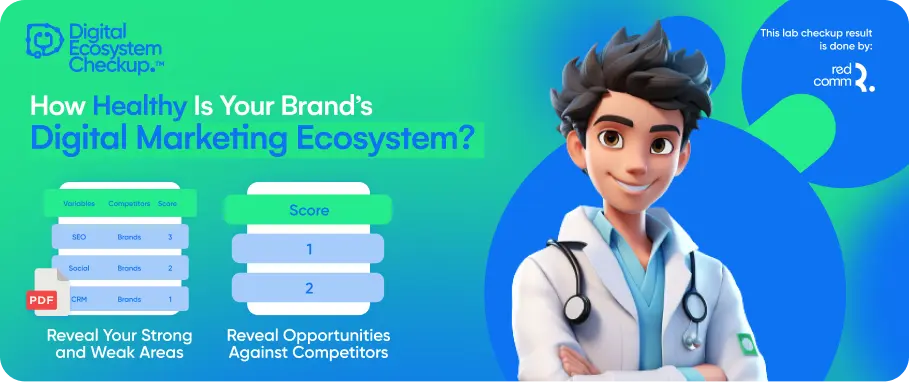In the vast terrain of digital content, SEO reigns supreme as the compass guiding traffic and rankings.
Unlocking SEO Success: Tackle These 5 Common Website Problems

However, traversing this landscape isn't without its hurdles. Join us as we uncover two prevalent SEO challenges and the strategies to overcome them, ensuring your online presence stays robust and vibrant.
1. Keyword Volume and Competition
Picture this: you've meticulously crafted a piece of content, but the traffic seems underwhelming.
Before you hit the panic button, delve into the realm of keyword volume and competition. These metrics, intertwined with seasonal and industry trends, dictate your content's visibility.
How to fix it?
Refine content quality: Amidst rising competition, ensure your content remains pertinent and polished. Refresh it with updated information and embed relevant links. Leverage on-page SEO techniques to optimize every aspect.
Diversify keyword targets: While high-volume keywords allure, targeting less competitive ones can be a game-changer. By amalgamating a mix of keywords, you broaden your reach and fortify your SEO foundation, paving the way for sustained growth.
2. Low Local Rankings
For small businesses, the local arena is where the battle for visibility rages fiercest.
Picture this: you search for your service, only to find your competitors basking in the limelight while you linger in the shadows.
A dire situation indeed, considering the pivotal role search engines play in guiding consumer journeys.
How to fix it?
Do your local keyword research: Harness the power of keywords that blend your services with your location. Sprinkle these gems throughout your website—from page titles to image alt text, to capture the attention of local searchers.
Optimize your listings: Claim your rightful place in the upper echelons of business directories. Complete your profiles with meticulous care, ensuring consistency across platforms like a well-tuned symphony.
Collect more reviews: Reviews are the currency of credibility in the realm of local SEO. Garnering stellar reviews not only boosts your reputation but also nudges you up the rankings ladder.
3. Ignoring Algorithm Updates
Google's algorithm, akin to a chameleon, constantly morphs in response to technological advancements.
While minor tweaks are par for the course, major updates can send ripples across your traffic and performance metrics.
How to fix it?
Revamp pages: In the wake of algorithmic shifts, assess pages that witness a traffic downturn. Update them to align with contemporary standards, breathing new life into their relevance.
Exercise patience: Sometimes, the tumult caused by algorithm updates settles over time. Be patient and monitor the fluctuations, allowing your pages to find their equilibrium.
Stay informed: Knowledge is power, especially in the realm of SEO. Keep abreast of impending updates and leverage community forums to glean insights from fellow practitioners.
Prioritize quality: Amidst the algorithmic shuffle, quality remains the lodestar. Uphold Google's E-A-T principles, crafting enduring content that transcends the transient nuances of algorithmic whims.
4. Pages Not Indexing
Picture Google as a diligent librarian categorizing web pages into its vast index, making them accessible to users with relevant searches.
Yet, sometimes, despite your desire for a page to be visible, it remains elusive in Google's realm.
How to fix it?
Check page settings: It's akin to a lost key found under the rug, often, the solution is right within reach. Navigate to your website builder and inspect if the page inadvertently got labeled as "no index." Whether it's a snippet of code or a simple checkbox, rectifying this can restore your page's visibility.
Request indexing: Once the settings are corrected, take the proactive step of submitting the page for indexing. Head to Google Search Console, paste the URL, and hit submit. It's a digital handshake with Google, inviting it to reevaluate and include your page in its library.
5. Languid Page Speed
Ever felt the frustration of a webpage loading at a snail's pace? You're not alone. Google, the gatekeeper of the internet, despises tardy pages just as much as we do.
Why? Because users are quick to abandon ship if a page takes too long to load. Every second counts, with a one-second delay slashing user satisfaction by a whopping 16% and nailing down the conversion rate by 4%.
In 2021, Google raised the stakes with its page experience update, emphasizing the significance of Core Web Vitals. So, how do we tackle this sluggish nemesis?
How to fix it?
Compress large files: Trim the fat from your images without sacrificing quality. Aim for a file size between 70-100KB using free tools like Tinify. And don't forget about videos and GIFs, embed videos where possible and compress those GIFs to save precious space.
Optimize your code: Streamline your code through minification, asynchronous loading, and lazy loading. Less excess means faster loading times.
Enable caching: Let your browser cache do the heavy lifting by storing copies of webpages. This means faster load times upon return visits, sparing your users from the dreaded loading screen marathon.
In essence, mastering SEO entails navigating through a labyrinth of challenges, armed with resilience and adaptability.
By addressing these common issues head-on, you fortify your digital stronghold, ensuring sustained visibility and resonance amidst the ever-evolving digital landscape.
DISCOVER MORE OF WHAT MATTERS TO YOU
RELATED TOPIC


